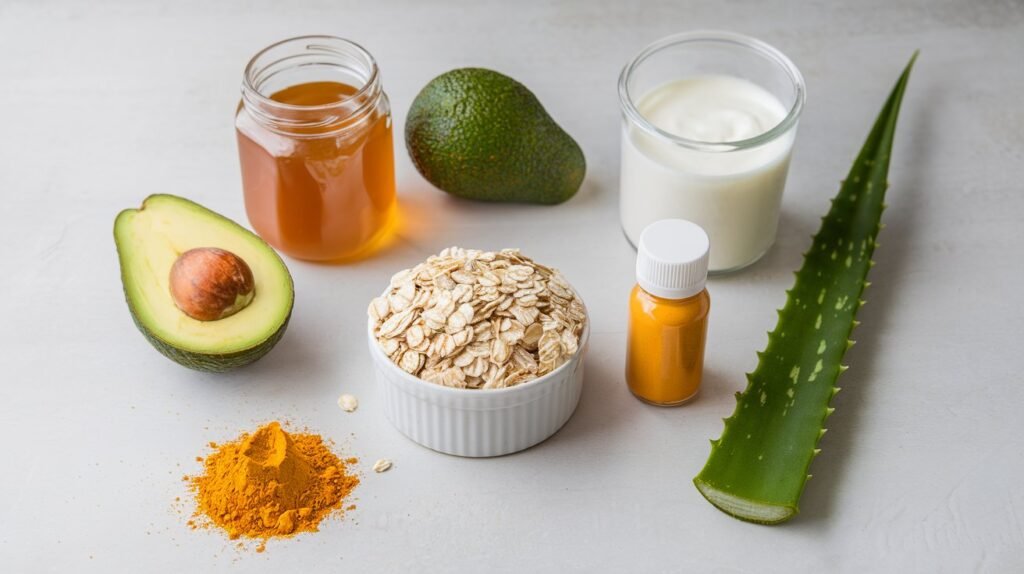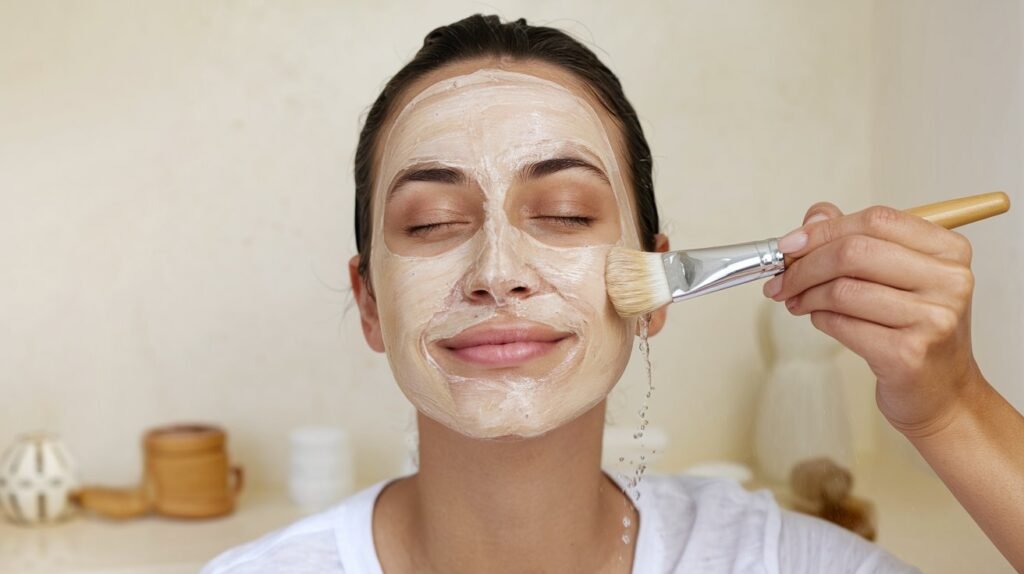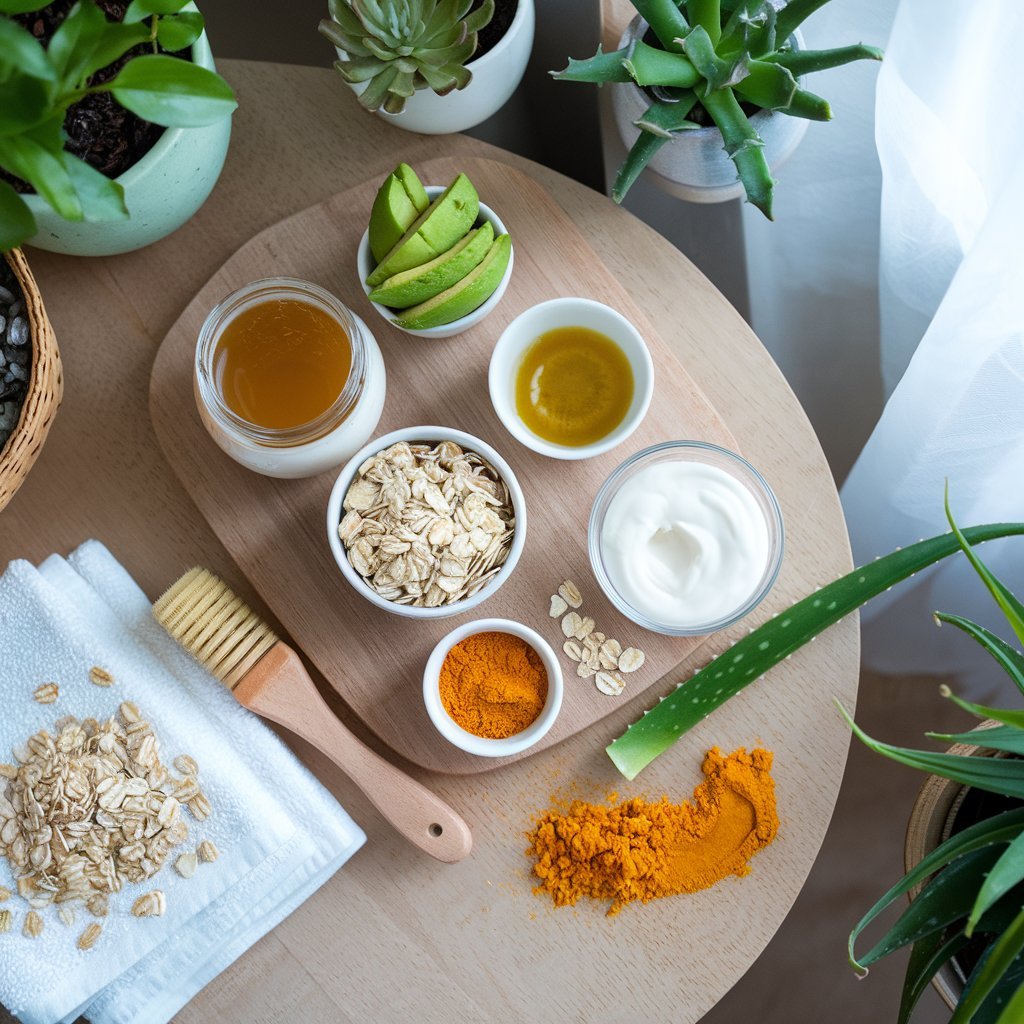As many skincare products are packed with chemicals and harsh ingredients, it’s no wonder many people are turning to homemade face masks for their skincare needs. These DIY solutions are not only cost-effective but also free of harmful additives. Whether you’re looking for hydration, exfoliation, or acne treatment, homemade face masks can be tailored to fit your unique skin needs.
We’ll explore the best homemade face mask recipes, their benefits, and some scientific evidence backing their effectiveness. With natural ingredients straight from your pantry or garden, you can achieve radiant skin without breaking the bank.
Table of Contents
Introduction
The demand for natural skincare solutions has skyrocketed over the past decade, with people opting for safer, more eco-friendly alternatives. Homemade face masks have emerged as a popular choice, offering a plethora of benefits without the artificial preservatives found in commercial products. The best part? They’re highly customizable.
Whether you’re battling dryness, oiliness, or breakouts, you can create a mask that meets your skin’s unique needs. We’ll provide recipes, explore ingredient benefits, and take a look at the science behind homemade face masks.

Guide to Homemade Face Masks
Why Choose Homemade Face Masks?
Homemade face masks offer numerous advantages over store-bought options, such as:
- Natural ingredients: No harsh chemicals or synthetic fragrances that can irritate sensitive skin.
- Cost-effective: Many of the ingredients can be found in your kitchen or garden.
- Customizable: Tailor the mask to your skin type, concerns, and even seasonal needs.
- Eco-friendly: Less waste from packaging and a smaller environmental footprint.
Table 1: Benefits of Homemade Face Masks vs. Store-Bought Masks
| Benefit | Homemade Masks | Store-Bought Masks |
|---|---|---|
| Cost | Affordable ingredients | Can be expensive |
| Ingredient Control | Full control over ingredients | Contains preservatives, chemicals |
| Customization | Tailored to skin type | Pre-made formulas |
| Sensitivity to Skin | Gentle, natural ingredients | May cause irritation in sensitive skin |
| Eco-Friendliness | No packaging waste | Plastic packaging, more waste |
Best Ingredients for Homemade Face Masks
To create an effective face mask, it’s essential to choose the right ingredients that offer skin-enhancing properties. Here are some of the best natural ingredients and how they benefit the skin:
Honey
Honey is a natural humectant, which means it draws moisture to the skin, keeping it hydrated. It also has antibacterial properties, making it an excellent option for acne-prone skin.
Oatmeal
Oatmeal is known for its soothing properties and is ideal for sensitive skin. It acts as a gentle exfoliant, removing dead skin cells without irritation.
Avocado
Packed with vitamins and healthy fats, avocado moisturizes and nourishes the skin. It’s perfect for dry or aging skin types.
Yogurt
Yogurt contains lactic acid, which gently exfoliates the skin. It also helps tighten pores and even out skin tone.
Turmeric
Turmeric is a powerful anti-inflammatory agent. It helps reduce redness, brighten the complexion, and is known for its anti-aging benefits.
Egg White
Egg whites are rich in proteins and help tighten and firm the skin. They’re often used in masks designed to reduce the appearance of fine lines.
Aloe Vera
Aloe Vera is a powerhouse for hydration and calming irritated skin. It’s also known for healing acne and reducing redness.
Table 2: Popular Ingredients and Their Skin Benefits
| Ingredient | Primary Benefit |
|---|---|
| Honey | Hydrating, antibacterial |
| Oatmeal | Soothing, exfoliating |
| Avocado | Moisturizing, nourishing |
| Yogurt | Exfoliating, pore-tightening |
| Turmeric | Anti-inflammatory, brightening |
| Egg White | Tightening, firming |
| Aloe Vera | Calming, healing |
Homemade Face Mask Recipes
Hydrating Face Mask
Ingredients:
- 1 tablespoon of honey
- 1 tablespoon of mashed avocado
- 1 teaspoon of olive oil
Instructions:
Mix the ingredients in a bowl until smooth. Apply to your face and let sit for 15-20 minutes before rinsing with warm water. This mask deeply moisturizes and nourishes the skin, making it ideal for dry or combination skin types.
Acne-Fighting Face Mask
Ingredients:
- 1 tablespoon of honey
- 1 teaspoon of turmeric powder
- 1 teaspoon of yogurt
Instructions:
Combine the ingredients and apply a thin layer to your face. Leave it on for 10-15 minutes before rinsing. This mask combats acne while reducing inflammation and redness.
Anti-Aging Face Mask
Ingredients:
- 1 egg white
- 1 teaspoon of lemon juice
- 1 teaspoon of honey
Instructions:
Whisk the egg white until frothy, then mix in the honey and lemon juice. Apply to your face, avoiding the eye area, and leave on for 15 minutes. The egg white firms and tightens the skin while the lemon juice brightens it.
Exfoliating Face Mask
Ingredients:
- 2 tablespoons of oatmeal (ground)
- 1 tablespoon of yogurt
- 1 teaspoon of honey
Instructions:
Mix the ingredients together and gently massage onto the skin. Let the mask sit for 10 minutes, then rinse with lukewarm water. This mask exfoliates the skin, removing dead cells and leaving it soft and smooth.
Brightening Face Mask
Ingredients:
- 1 tablespoon of turmeric powder
- 1 tablespoon of yogurt
- 1 teaspoon of honey
Instructions:
Apply the mixture to your face and leave on for 10-15 minutes. Rinse thoroughly. This mask helps brighten the complexion and reduce dark spots.
Scientific Backing: Do Homemade Face Masks Really Work?
While homemade face masks are widely used and praised, it’s important to know what science says about their effectiveness. Many of the ingredients, such as honey and yogurt, have been studied for their skin benefits.
Honey
Research shows that honey has antimicrobial properties and can improve skin hydration .
Oatmeal
A study from the National Center for Biotechnology Information (NCBI) highlights oatmeal’s ability to soothe and protect the skin, making it a great option for sensitive skin .
Turmeric
Turmeric contains curcumin, an anti-inflammatory compound that has been shown to reduce redness and acne .
How to Apply and Remove Face Masks for Maximum Benefit
- Prep your skin: Cleanse your face to remove makeup, dirt, and oil.
- Apply evenly: Use a brush or your fingertips to spread the mask evenly.
- Relax: Leave the mask on for the recommended time, allowing it to absorb into your skin.
- Rinse gently: Use lukewarm water to remove the mask, followed by a moisturizer.

Frequently Asked Questions
Here are some additional FAQs for homemade face masks:
1. Can I store leftover homemade face mask mixtures?
A: Most homemade face masks are made without preservatives, so they should be used immediately to maintain freshness and effectiveness. If you need to store the mask, refrigerate it and use it within 24 hours to prevent bacterial growth.
2. How often should I use a homemade face mask?
A: It depends on the type of mask and your skin’s needs. Hydrating masks can be used 2-3 times per week, while exfoliating or deep-cleansing masks should be limited to once or twice a week to avoid over-exfoliation or irritation.
3. Can I mix ingredients from different face mask recipes?
A: Yes! You can mix ingredients as long as you are using safe and complementary items. For example, you can combine honey and yogurt for hydration or mix turmeric with oatmeal for brightening and exfoliation.
4. Are there any ingredients to avoid in homemade face masks?
A: Yes, avoid ingredients that can irritate your skin, such as undiluted lemon juice, baking soda, or any essential oils if you have sensitive skin. Always perform a patch test on a small area before applying any new ingredient to your face.
5. What skin types are homemade face masks suitable for?
A: Homemade face masks can be adapted for all skin types:
- Dry skin: Use hydrating ingredients like honey, avocado, and olive oil.
- Oily skin: Try masks with clay, oatmeal, or yogurt to absorb excess oil.
- Sensitive skin: Use calming ingredients like oatmeal, aloe vera, and honey.
- Acne-prone skin: Look for ingredients with antibacterial properties like honey, tea tree oil, and turmeric.
6. Can homemade face masks cause allergic reactions?
A: Yes, certain ingredients in homemade face masks can trigger allergic reactions, especially if you have sensitive skin. Always perform a patch test by applying a small amount of the mixture to your inner wrist or behind your ear to check for any adverse reactions.
7. Can I use a homemade mask if I have acne-prone skin?
A: Yes, homemade masks with antibacterial and anti-inflammatory ingredients like honey, turmeric, and tea tree oil can help treat acne. However, avoid using overly rich ingredients like heavy oils if your skin is already prone to breakouts.
8. Are homemade masks safe for all ages?
A: Generally, homemade face masks made with natural, non-toxic ingredients are safe for most ages. However, for children and teenagers, it’s essential to avoid harsh ingredients and ensure all components are safe for young, sensitive skin.
9. Can I wear a homemade face mask overnight?
A: It’s best to avoid wearing most homemade face masks overnight unless specifically designed for prolonged use, like a hydrating mask. Ingredients like turmeric can stain, and others can dry out and irritate the skin if left on for too long.
10. Can I use kitchen ingredients that are past their expiration date?
A: It’s not recommended to use expired ingredients in your homemade face masks, as they may harbor bacteria or have lost their beneficial properties, which could lead to irritation or infections.
11. Do homemade face masks work better than store-bought masks?
A: The effectiveness depends on the ingredients used and your skin’s needs. Homemade masks are free from preservatives and additives, which can be beneficial for sensitive skin. However, store-bought masks often contain concentrated active ingredients that may provide quicker results for specific concerns.
12. What should I do if my skin feels irritated after using a homemade mask?
A: If your skin feels irritated, immediately wash off the mask with cool water and apply a gentle, soothing moisturizer or aloe vera gel. Avoid using the mask again and try a patch test for any new ingredients in the future to prevent further irritation.
13. Can men use homemade face masks?
A: Absolutely! Homemade face masks can benefit all genders. Men can use these masks to address common skincare concerns like dryness, oiliness, and acne, just as women can.
14. How can I enhance the results of a homemade face mask?
A: To maximize the benefits of your homemade face mask:
- Exfoliate your skin before applying the mask to remove dead skin cells.
- Steam your face or use a warm washcloth to open pores before applying the mask.
- Follow up with a toner and moisturizer after rinsing off the mask to lock in hydration.
15. Is it safe to use raw egg in face masks?
A: Raw egg, particularly egg whites, is often used in face masks for tightening the skin. However, there is a slight risk of bacterial contamination (e.g., salmonella), so it’s essential to use fresh eggs and wash your hands thoroughly after application. Avoid raw egg masks if you have cuts, open sores, or sensitive skin.
These FAQs provide useful tips and safety precautions for anyone interested in using or creating homemade face masks. Let me know if you need any more information!

Conclusion
Homemade face masks offer an affordable, natural, and customizable approach to skincare. Whether you’re looking to hydrate, fight acne, or reduce signs of aging, these masks allow you to nourish your skin with safe ingredients straight from your kitchen. By understanding your skin’s needs and selecting the right ingredients, you can achieve glowing, healthy skin without the chemicals found in store-bought products.
References
- Honey: Pasupuleti, V. R., Sammugam, L., Ramesh, N., & Gan, S. H. (2017). A review on the medicinal properties of honey. Journal of Clinical and Diagnostic Research, 11(8), CE01-CE05. Link
- Oatmeal: Cerio, R., Dohil, M., Jeanine, D., Magina, S., & Mahé, E. (2010). Mechanism of action and clinical benefits of colloidal oatmeal for dermatologic practice. Journal of Drugs in Dermatology, 9(9), 1116-1120. Link
- Avocado: Fulgoni, V. L., Dreher, M., & Davenport, A. J. (2013). Avocado consumption is associated with better diet quality and nutrient intake, and lower metabolic syndrome risk in US adults: results from the National Health and Nutrition Examination Survey (NHANES) 2001-2008. Nutrition Journal, 12(1), 1-6. Link
- Yogurt: Sanders, M. E., Merenstein, D. J., Reid, G., Gibson, G. R., & Rastall, R. A. (2013). Probiotics and prebiotics in intestinal health and disease: from biology to the clinic. Nature Reviews Gastroenterology & Hepatology, 10(9), 491-502. Link
- Turmeric: Aggarwal, B. B., Sundaram, C., Malani, N., & Ichikawa, H. (2007). Curcumin: the Indian solid gold. Advances in Experimental Medicine and Biology, 595, 1-75. Link
- Aloe Vera: Surjushe, A., Vasani, R., & Saple, D. G. (2008). Aloe vera: A short review. Indian Journal of Dermatology, 53(4), 163-166. Link
- Egg White: Lin, J. Y., & Fisher, D. E. (2007). Melanocyte biology and skin pigmentation. Nature, 445(7130), 843-850. Link




